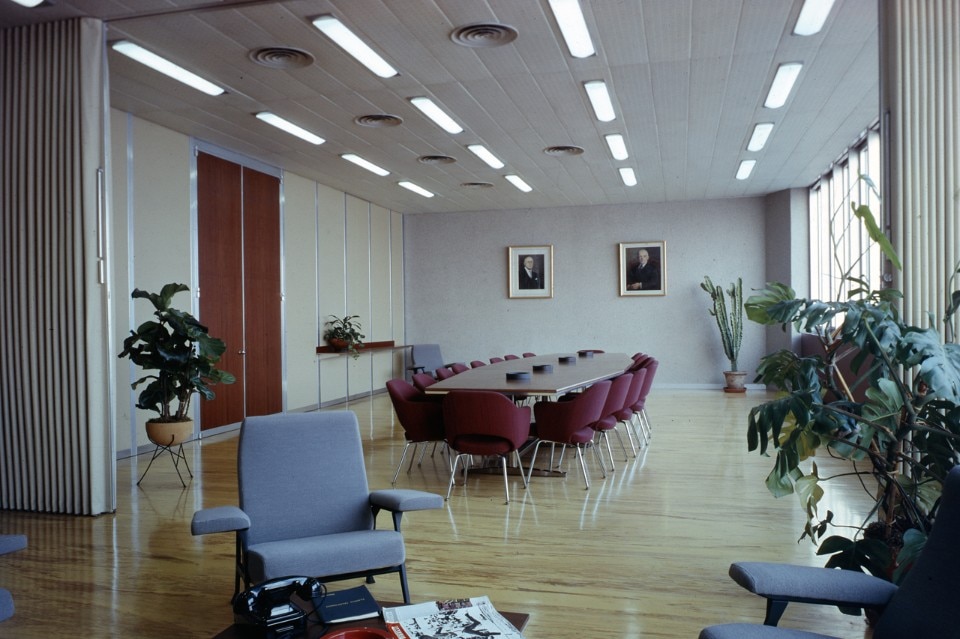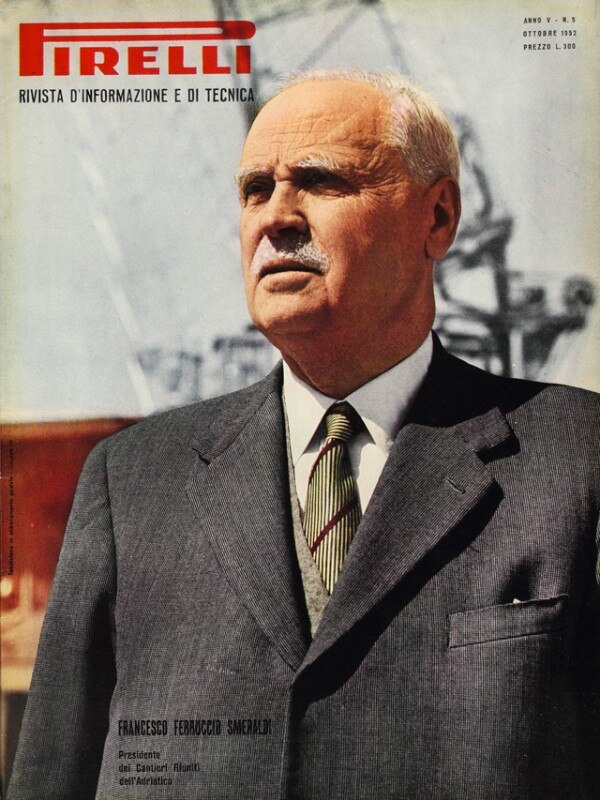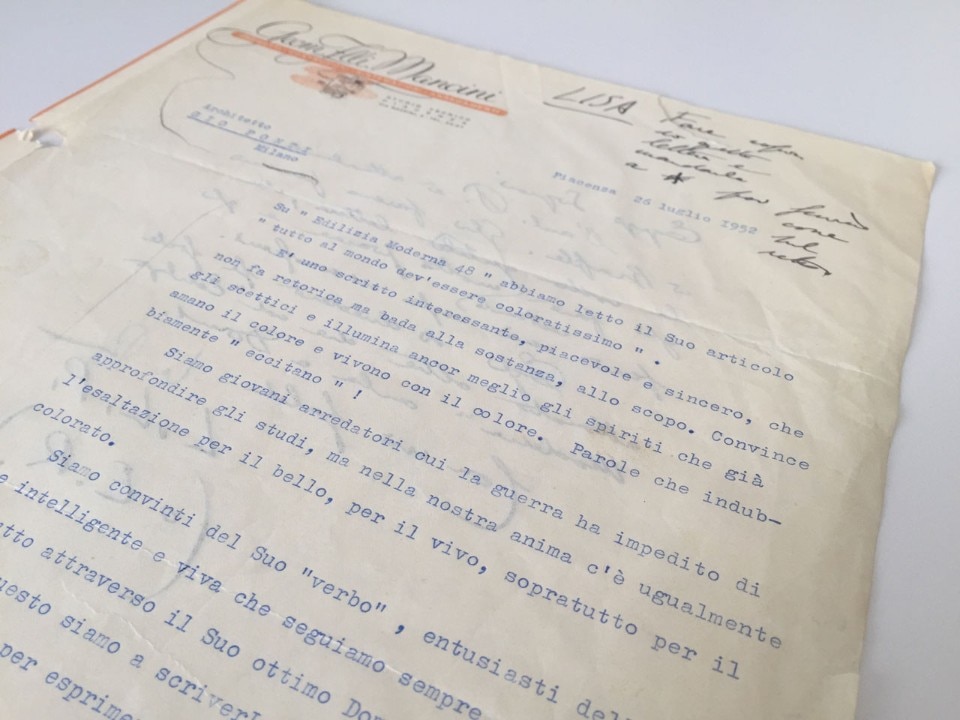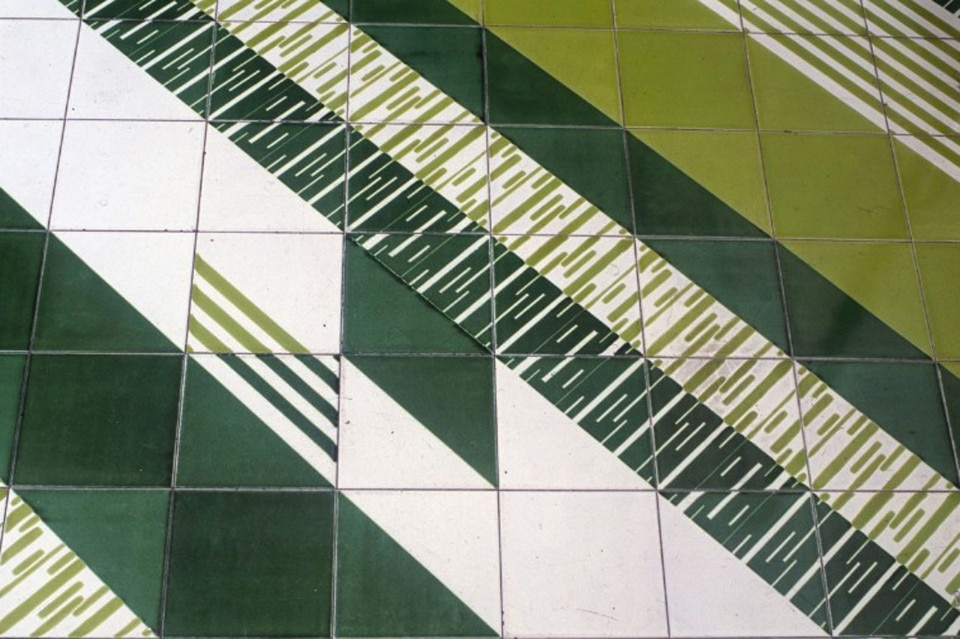In 1952, a reader of Domus wrote to the then editor-in-chief Gio Ponti, commenting: “For years I have dreamt of seeing grey, grey-black and grey-grey clothes vanish from our lives […] and I am delighted whenever I see a girl wearing a colourful outfit. […] Colour is festivity and life, while grey to me seems above all like a useless, cold conviction.”
Other letters like this one can be found among the old correspondence folders in Domus’s archive. They were received from architects and students who, after reading “Everything in the World Must Be Colourful” – an article penned by Gio Ponti in 1952 for Pirelli magazine – enthusiastically wrote to the editor-in-chief about his ideas, commending his brilliant spirit in promoting innovation and modernity.
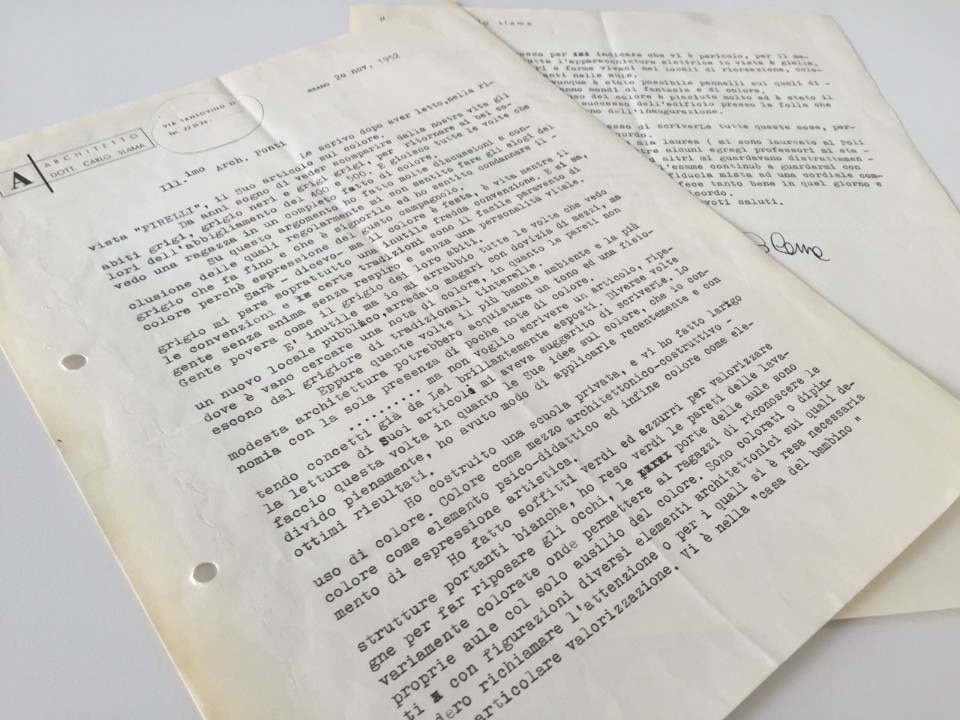
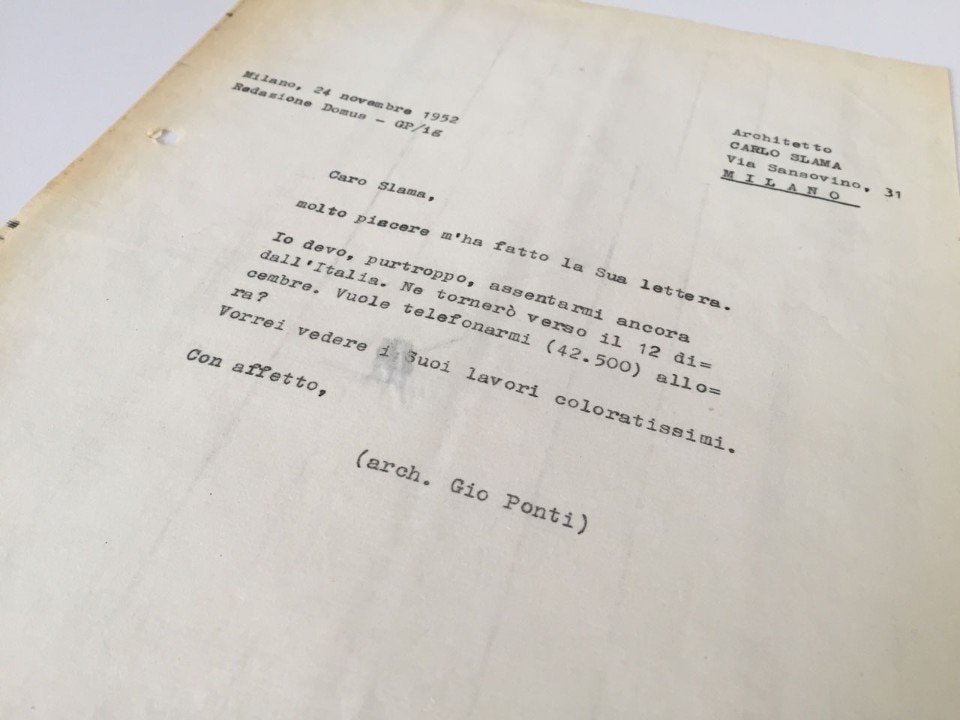
According to Ponti, when colouring a house’s interior one must start from the floors. And you had to choose a single, beautiful, strong colour for the whole house, or compose the colours.
He explained: “For the first way – which has a beautiful harmonising effect that immediately characterises the house and will impress it in everyone’s memory – do not resort to plain-coloured rubber or linoleum. […] Choose multicoloured and ‘fantastic’ linoleum and rubber – they are also more practical – and cast, for example, a light-blue floor entirely of the same colour throughout the house. Cast a blue lake, with white walls and ceilings, and with Venetian blinds, fabric and yellow wood. Blue and yellow, sky-blue and brown are beautiful ranges. And some hints of cherry red. And paintings by Guidi and Campigli. Cast a red floor throughout the house, a lake of fire, with white walls and ceilings, and curtains coloured red, yellow, or red and yellow, which is another beautiful range. But also (emerald) green tones. And paintings by Sassu and Fiume, and de Chirico’s mannequins (the only ones of value by de Chirico).
